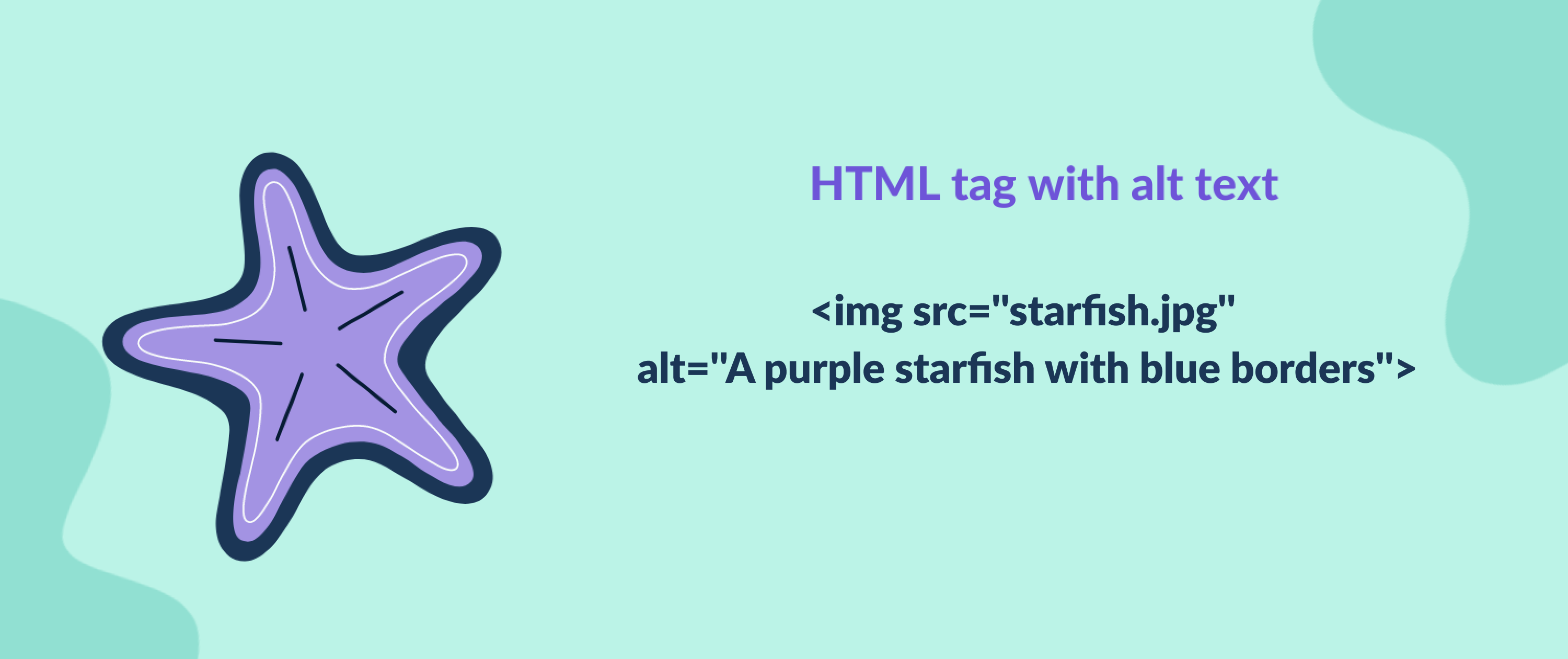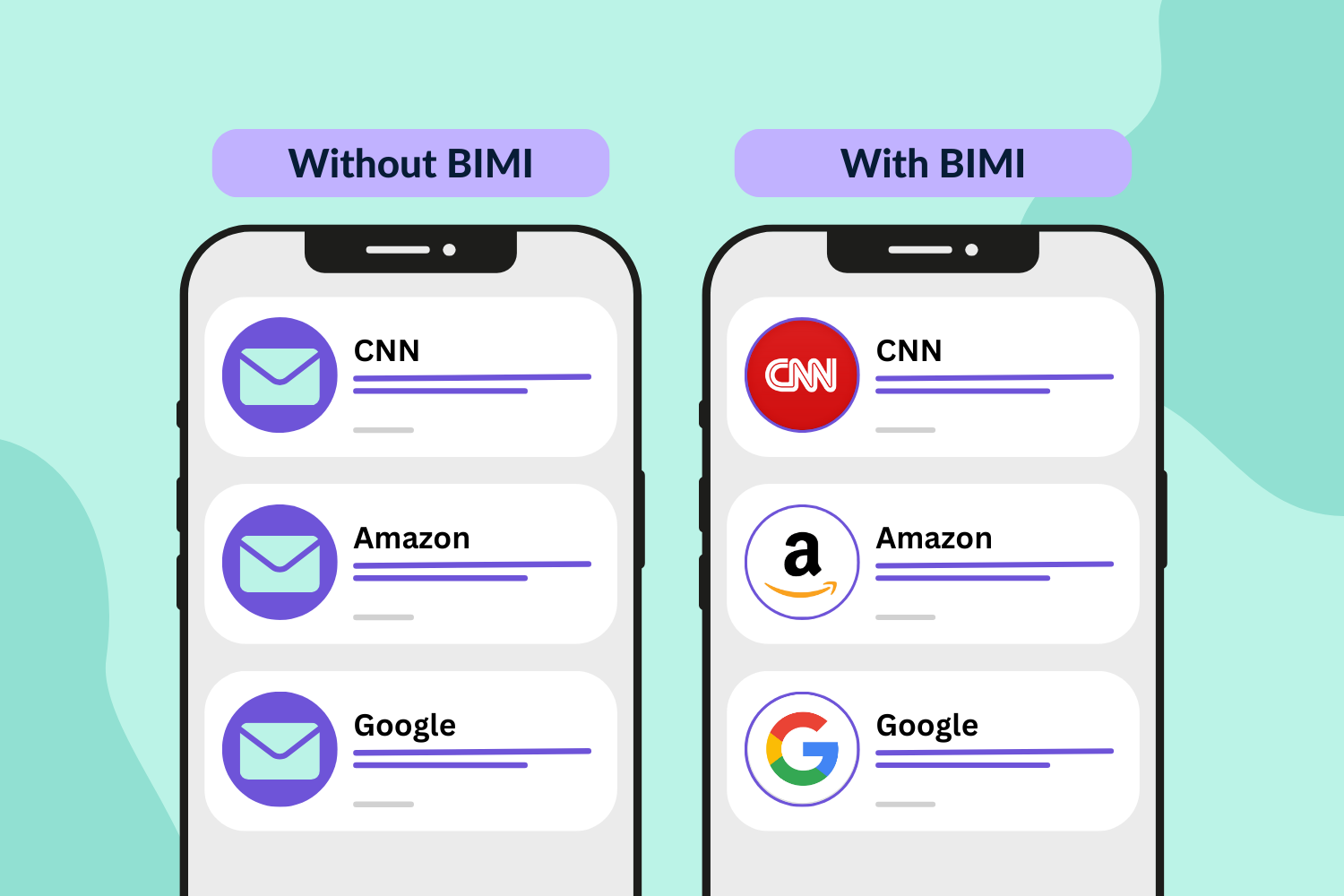We have talked a lot about why email marketing is one of the best ways to market your product and service, but there are times when beginners don’t understand every word they come across during this journey. Some of them, such as BIMI, confuse a lot of experienced marketers, too.
To solve this, we gathered a list of the most used email marketing terms everyone should know.
Alternate text
Alternate text, also known as “alt text”, refers to the description of the image for those who can’t see it due to the image not being loaded or due to visual impairment.
There are two ways in which this is used:
- Email inbox shows the “alt text” when the image is not loaded – this helps the reader get information about the image.
- When using a screen reader – the “alt text” is read by the screen reader to let the person know what the image looks like.

Autoresponder
An autoresponder, also known as automation, is a feature in email marketing tools that helps send automated emails based on the user’s action.
For example, you can send an automated email whenever someone purchases a product on your e-commerce website. On EmailOctopus, you can do this by creating automation that will be triggered once a recipient is added to your list after they have made a purchase.
BIMI
BIMI, or Brand Indicators for Message Identification, is a new email authentication standard that lets email clients such as Gmail and Hotmail verify the sender and display the brand logo along with the email address. This should help reduce phishing attacks, as the impersonator won’t have the brand logo displayed next to their email.
We have a detailed guide on BIMI – check it out if you’re interested in learning more.

Bounce rate
Bounce rate in email marketing refers to the percentage of emails that were sent but weren’t delivered to the recipients. For example, if you’ve sent 100 emails, out of which 20 emails bounced, then the bounce rate would be 20%.
There are 2 types of bounces:
- Hard bounce occurs in events where the email address doesn’t exist or if your email is blocked by the recipient’s email server.
- Soft bounce occurs when an email address is temporarily inactive, or the recipient’s inbox is full. There might be many more reasons for this, but as it’s a temporary issue, you might reach that contact again in the future.
CTA
CTA or call-to-action is a clickable link or a button specially added to make the user take a desired action, such as purchasing or signing up for something. The goal is to make it easy for the user to act but also to increase the engagement rate of the email.
Here’s a detailed guide on how to use CTA’s on email, do check it out.

CTR
CTR stands for click-through rate, which is a measure of the percentage of users clicking on a link inside the email.
The formula for CTR is: (Number of clicks / Number of delivered emails) x 100
In general, a high CTR means the email is engaging and resonates with the target audience.
Double opt-in
Double opt-in is a method used in email marketing to confirm and verify a recipient’s consent to receive emails from a sender. It’s also a way to check whether the email address is legitimate before it’s added to the subscriber list.
In general, double opt-in is done by sending an email post subscribing, where the recipient needs to click a link/button to be added to the email list.
DMARC
DMARC stands for Domain-based Message Authentication, Reporting, and Conformance. It’s an email authentication protocol that checks whether SPF and DKIM (which are vital email authentication protocols) attached to the email address/domain are valid or not.
DMARC works by allowing domain owners to specify policies for email receivers on how to handle unauthenticated emails, preventing spoofing of their domain.
ESP
ESP stands for Email Service Provider, it refers to email marketing tools like EmailOctopus that provide the ability to send and automate marketing emails. It’s practically a tool that helps you with everything regarding email marketing.
Sender Email Address
A sender email address is the “from” email address that you can generally see inside your email inbox. It helps recipients identify who is the sender of the email.
It can be a personal email address, such as tom@emailoctopus.com, or a business email address, such as support@emailoctopus.com.
Subject Line
A subject line is a short line that appears in the recipient’s inbox next to the sender’s name. It’s typically a short sentence that lets the recipient know what the email is about.
Segmentation
Segmentation is the process of segregating your subscribers into groups based on criteria such as demographics, interests, or past behaviour. It helps achieve more personalisation in email campaigns and improves customer experience.
For example, let’s assume you have an e-commerce clothing site for both men and women. The easiest segmentation category here would be based on gender to send emails with gender-specific products.
SPAM
Most people already know what spam is. In email marketing, spam refers to unsolicited or unwanted messages sent through bulk email tools.
Do note that ESPs like EmailOctopus don’t allow sending such emails, and mostly, these emails land in the spam folders.
Tags
Tags are text values that can be assigned to subscribers to help identify the contacts who have (or don’t have) a specific tag assigned to them and segment them accordingly.
UTM
UTM stands for Urchin Tracking Module, and you must be wondering what Urchin here stands for. Google Analytics was formerly known as Urchin (the name was changed once Google acquired it). In Urchin, there used to be URL parameters that were used to track the performance of marketing campaigns based on source, medium, etc.
Though Urchin’s name got changed, UTM more or less remained the same. Using UTM, you can add parameters to your URL, such as source, medium, campaign, term, and content and help you track the performance inside your analytics tool.
Welcome email
A welcome email is the first automated email sent to a contact once they subscribe to your email list. It’s a great way of introducing your brand and setting expectations about your newsletter. A well-written welcome email helps make a great first impression, establish trust, and initiate engagement with the new subscriber.
Conclusion
Hope that this glossary of email marketing terms has been helpful in clarifying some jargon you might encounter as you get started with your email campaigns.
Though there might still be a couple of new terms that we should have mentioned here, the goal of this glossary is to be a crisp and short source of explanation for the most broadly used email marketing terms.


No Comments
Leave a comment Cancel